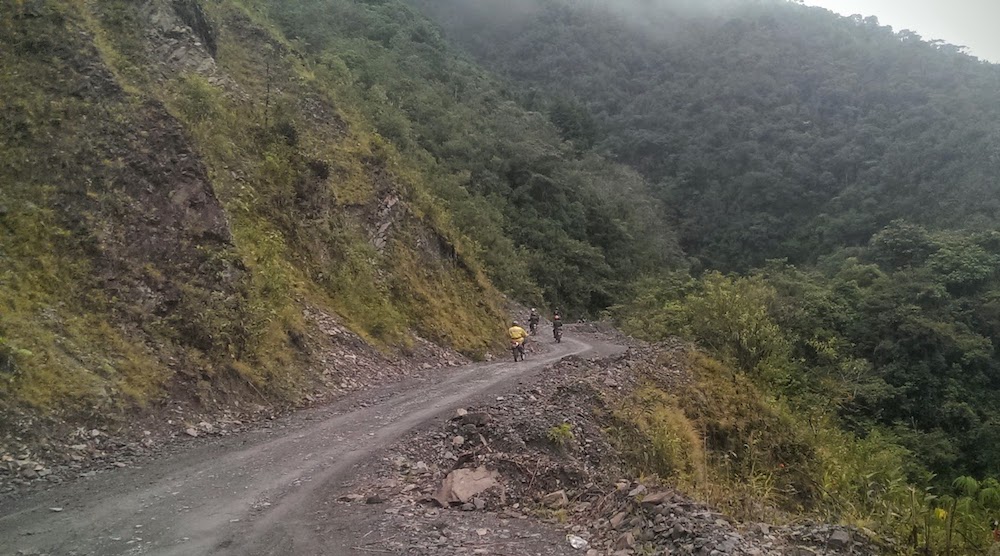Aussie woman Yvonne Everett rode the Bolivian Death Road with Motorbike Adventure Touring, while on a 5000km motorcycle adventure with Compass Expeditions across the Andes. Here’s her story.
My partner’s reassuring voice is in my ear: “Don’t stop, keep moving”.
He’s behind me, chatting through the intercom mounted in our helmets as I splash through a rocky creek and slide into mud. I have no intention of stopping, she who hesitates has clearly lost her grip.
We’re riding the legendary Death Road in Bolivia. The world’s most dangerous road is a famously narrow track with precipitous drop-offs and regular roadside memorials. Waterfalls tumble down sheer cliffs directly onto the dirt road. Landslides slope into misty oblivion.
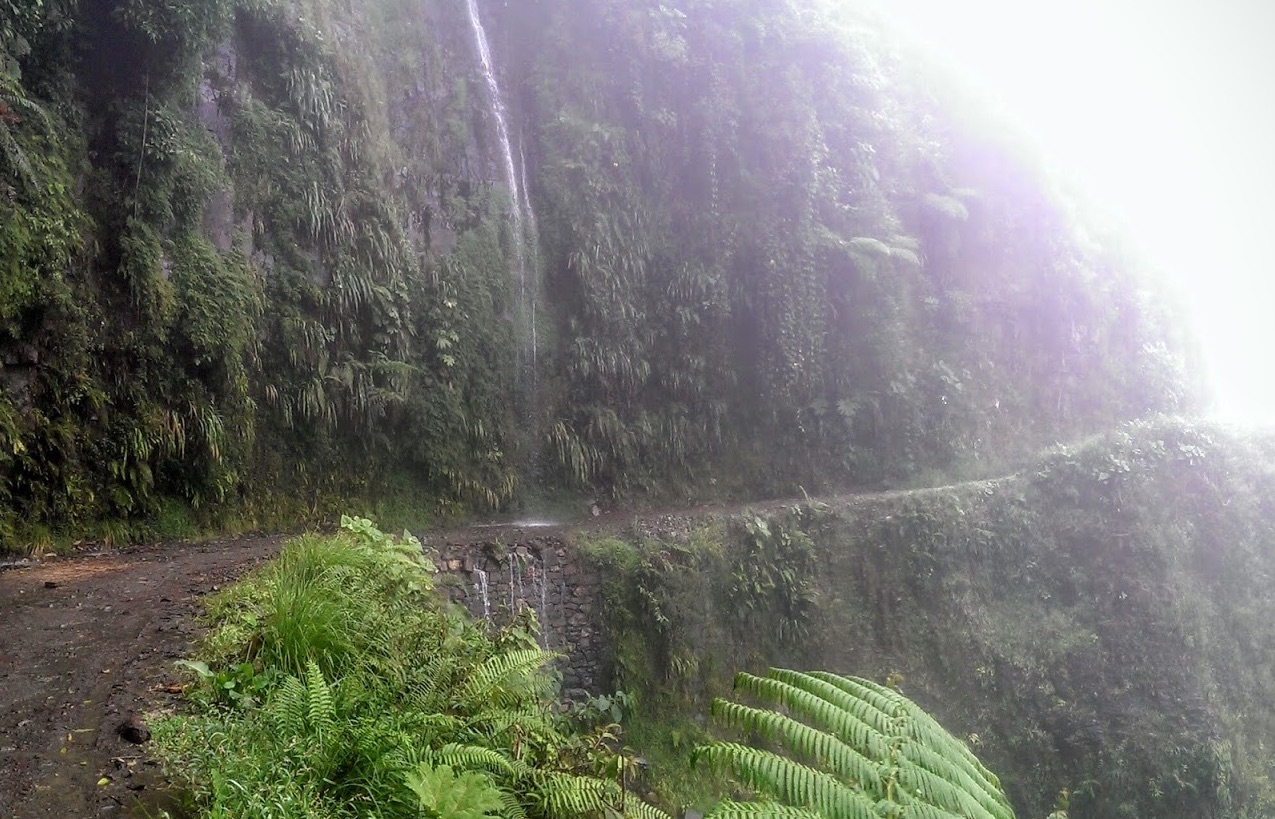
While bicycles go down Death Road, motorcycle tours go up. Bolivia drives on the right side of the road. Except for Death Road, where the rule changes to allow the descending driver to more easily peer over the suicidal edge as she squeezes past oncoming traffic. Riding up Death Road on a motorbike means I’ll be on the left side of the road, safely glued to the comforting rock face and far from the edge. Oh, and motorbikes have better brakes.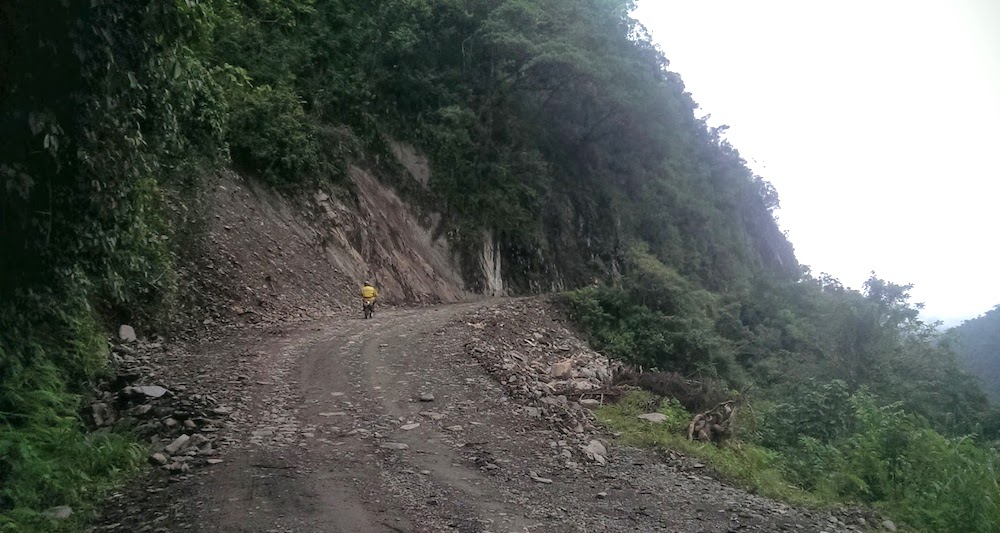
The day begins at 8am in La Paz at the bike shop. There are seven boofy blokes and me, standing in a loose circle around our guide, Robin. I watch the sun light up the dramatic rose-gold rock spires of the Valle de Luna, as Robin cheerfully recounts tales of misadventure and broken bodies.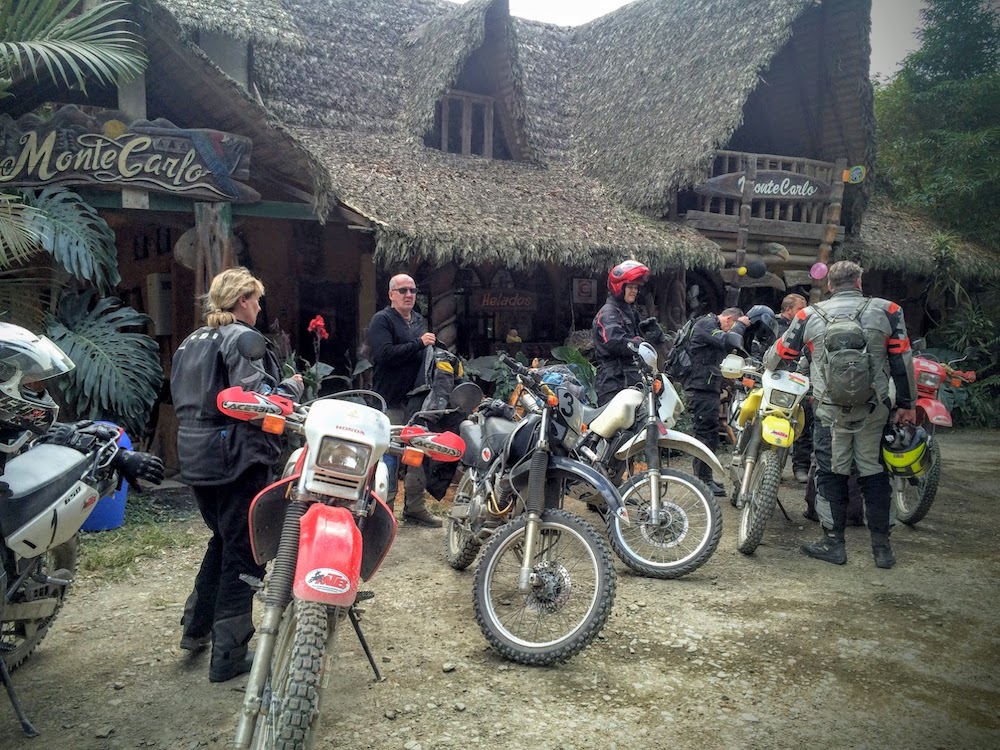
My hire bike is a basic Honda 250cc with none of the niceties I’m used to, like heated hand grips and side mirrors. I kick the tyres, test the brakes.
Safety pep talk over, we set off, climbing on dirt back roads up past a gold mine and across a steep rocky scree slope to the high point at La Cumbre Pass. Here we join the paved road and stop for a rest.
Robin spills some neat alcohol on our bike tyres and offers us a sip. Seriously? “For Pachamama (Earth Mother), to ensure you have a safe journey” says Robin. I take it; my partner frowns.
We descend from the pass on the new road, completed in 2009 and now taking most of the traffic. It’s every biker’s dream, as we swoop like condors, leaning our bodies into the endless open curves with the snow-capped Andes towering above. Soon we drop into the cloud layer and the vegetation changes from altiplano grassland to lush rainforest.
Visibility is limited in the wet mist, so I fixate on following the painted white centre line as the road winds its way endlessly downhill. I raise my foggy visor to see better, and freezing rain droplets sting my face. We zoom through tunnels, fly across bridges and loop gracefully around hairpin bends. Popping out the clouds into sunshine, we stop briefly to squeeze the water out of our gloves. I brush the icicles off my eyebrows.
Later, where the road narrows suddenly to bump through a landslide, one of the speedy blokes up front drops his bike and breaks his foot. It would, of course, be bad karma for this slow but steady old girl to make any comments.
After a lunch break at Yolosa, it is time to ascend the real Death Road for the return to La Paz. As we pay the road toll, some miserable cyclists straggle by, exposing raw red grazes and nursing arms in slings. I am grateful I have an engine and motorcycle protective clothing.
We reach the first creek crossing and the mud. Motorcycle riders must simultaneously embrace and deny risk. In Motorcycles I’ve Loved, Lily Brooks-Walton describes the “delicate ridge one must ride between fear and reason on a motorcycle – lean too far in either direction and there will be consequences”.
I turn off my unhelpful brain that would stop to analyse creek depth and slipperiness. “Trust the bike, trust your body”, I tell myself. I loosen my grip, stand up on the pegs, pick a line and go for it. Keep moving.
Motorcycling is profoundly sensual, its living life in the moment: the involuntary movements in response to the suddenly changing surface, the splash of icy water, the smell of the mud. Elation is mixed with relief as I arrive still upright on the other side.
The clouds do not lift as the day warms up and we climb above the sunny foothills back into wet fog. I’m grateful for this, as it means I can’t see the bottom of the precipice on my right! Some things it is better not to know. We stop where travellers like to dangle their legs over the cliff edge for the glory shot, but the mist denies us a photograph today.
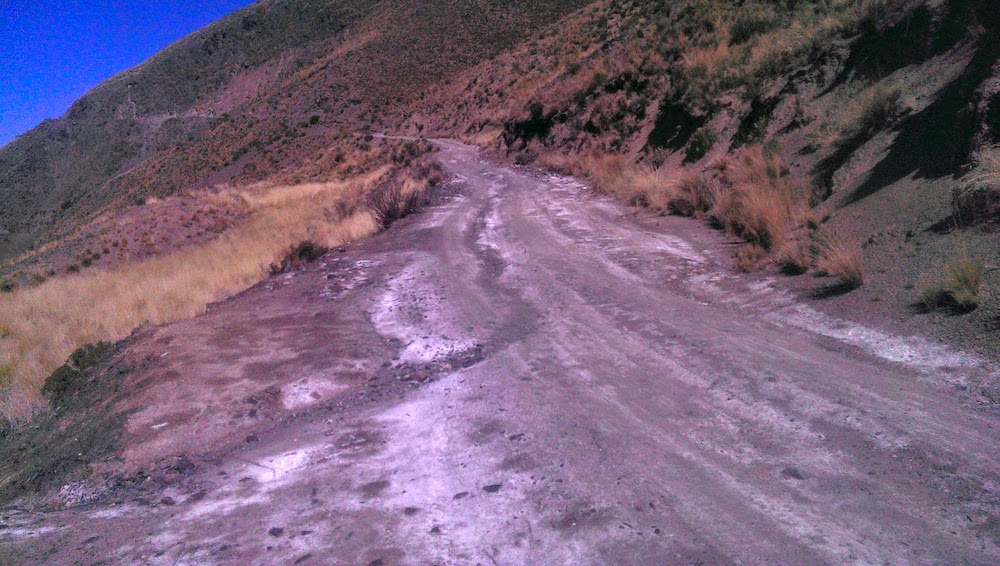
We get to the top of the pass where I take a few moments to attempt to warm some life back into my hands. It is only once we hit the busy traffic of La Paz that I thaw out. Navigating the manic city takes all my focus. By 6pm we are safely back at base returning the bikes.
Melissa Holbrook Pierson writes in The Perfect Vehicle “Riding a motorcycle can make you feel joyous, powerful, frightened, and back out to happy again. It is life compressed, its own answer to the question ‘Why’?”.
I rode Death Road; I am deliciously alive.
Watch the video of Yvonne’s ride here.
- Tell us your travel story! Send details and photographs to us at mark@webbikeworld.com.


